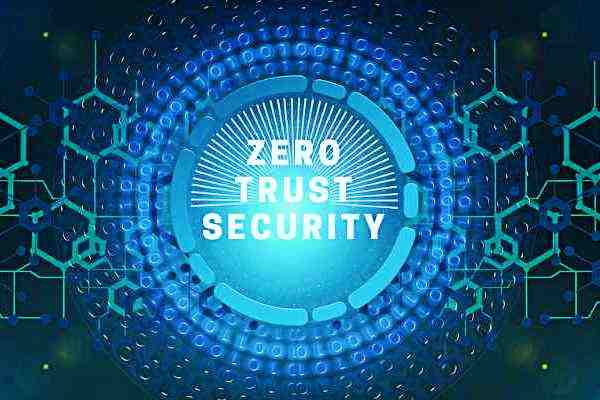Even as the pandemic is slowly abating, several employees around the world are still working from home to further reduce the spread of COVID-19. Whether your workers are back in their offices or still working remotely, the importance of cybersecurity and zero-trust security strategy remains undiminished through the ongoing phase.
As you’ll find, remote cybersecurity is more challenging than when your employees are working within your company premises. Apart from managing the other data security tasks such as remote access management, you must direct all your employees and your security team to follow certain requisite cyber hygiene measures. A zero-trust data security strategy is a part of such measures.
Businesses following the zero-trust security model instruct their employees and management to trust no entity by default. This model is almost tailor-made to suit the added security risks of a mobile workforce during the pandemic. Vigilance and cyber-hygiene are the two most important aspects of the zero-trust security strategy. This strategy needs to be adopted by all the end-users in the IT network to boost the security stature of the business.
Some of the main components of a zero-trust security strategy are:
Micro-segmentation
Amongst other components, the zero-trust model uses a particular technique that involves the division of perimeters into mini zones that allows your business to maintain different access controls for each one that is a part of the network. This technique is known as micro-segmentation, and it allows your business to contain attacks.
Micro-segmentation makes use of virtualisation for the creation of the above-mentioned fragments. After the creation, businesses can use powerful data security tools to identify the IP address of cybercriminals, as well as restrict the lateral or dangerous movement of users or external entities within your IT network. The segmentation can be carried out on the basis of location, device type, and other factors to optimise data security and isolate security risks before eliminating them.
Micro-segmentation is beneficial for your data network in the following ways:
a) Compliance
All organisations need to comply with regulatory compliance guidelines related to aspects such as storage, usage, and safety of user data. The personal information of customers is stored by businesses. Such data is governed by laws such as GDPR and the CCPA. The fragmentation process allows businesses to create specialised data security plans for each segment. Additionally, micro-segmentation makes auditing easier for your business.
b) Real-time threat and noise detection
Micro-segmentation acts as a great defensive strategy to prevent data breaches. As we know, despite taking the best measures and investing any amount of money, However, micro-segmentation creates the fragments that sow seeds of uncertainty in cybercriminals’ minds regarding the location of sensitive organisational data. Apart from detecting threats and noise in your IT network, micro-segmentation makes it easier to reduce response times, policy violations, and any kind of unsanctioned activity by your stakeholders or external parties.
c) Reduced threat surface area
Micro-segmentation is carried out through individual work devices or operations. Businesses may also carry it out by implementing cyber-hygiene risks and making it compulsory for your workers to take precautions to avoid them. What this does is reduce the surface area of attack by restricting their movement across the entire network. At most, a cyber-attack will cause damage to a particular segment and not all your operations and databases when you employ zero-trust data security protocols via micro-segmentation.
Least privilege access
To implement zero-trust data security strategies, your organisation needs to grant the lowest amount of user access to every employee. This allows you to restrict the lateral movement of network users and possible hackers who entered your data network through various avenues. The restricted movement is beneficial for reducing the attack surface area.
Here are some of the benefits of this zero-trust strategy:
a) Liability reduction
Generally, whenever an employee accesses data that they are not authorised to use, data security issues could take place. The least liability simply prevents anyone, insider or outsider, to have access to sensitive information until it is sure that an individual is authorised to operate certain data, files, folders, or operations. All in all, the least privilege principle reduces the surface area of attack once again.
b) Network security
The management team and cybersecurity experts need to maintain extensive records of access granted and logins made to the network, amongst other information. Having all that data makes it easier to classify it to have a better understanding of what kind of information is held in which micro-segment and which stakeholders can access it. In case of an insider attack, you will be able to catch the person responsible for it if you use the least privileged model and data micro-segmentation.
What those two also do is that they make it clear for every worker to know about the IT network and application boundaries they are supposed to stay within. If they cross then they can be caught and reprimanded or even punished in multiple ways. Such clarity of roles and responsibilities in data sharing and usage also makes it easy for your organisation to meet regulatory compliance requirements such as HIPAA.
As its name suggests, zero-trust strategies are all about not sharing information with any unauthorised party. Its principles include the need to always examine the current status of all the access controls within your organisation. Secondly, it encourages businesses to use preventative techniques to enhance application access and endpoint security. Additionally, this data security strategy allows you to monitor your data networks easily and create adaptable security strategies.
In order to get remote cybersecurity right, you will need the best data security tools too with strategies such as zero-trust security models.
(This article is written by Sonit Jain, CEO – GajShield Infotech. The views expressed in this article are of the author.)

